 |
| 葡萄石(Prehnite) 1.07 - 22.60ct と 菱亜鉛鉱(Smithsonite) 2.45ct |
葡萄石(Prehnite)
と
菱亜鉛鉱(Smithsonite)
 |
| 葡萄石(Prehnite) 1.07 - 22.60ct と 菱亜鉛鉱(Smithsonite) 2.45ct |
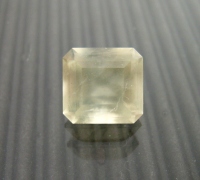 |
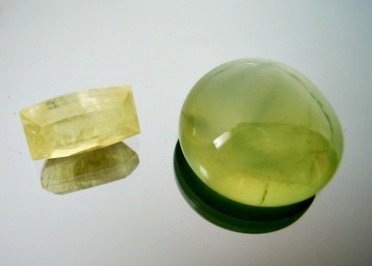 |
 |
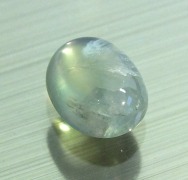 |
 |
| 菱亜鉛鉱 Smithsonite 2.45ct Tsumeb, Namibia |
ファセットとカボションカットの葡萄石 Prehnite in faceted and cabochon cut Barhead, Scotland and Poona, India |
葡萄石(Prehnite) 7.20ct 13.3x10.5mm 4.63ct 11.6x9.0mm 4.13ct 12.8x9.0mm | ||
| Bendoukou, Niolo du Sahel, Mali | ||||
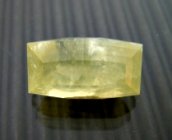 |
 |
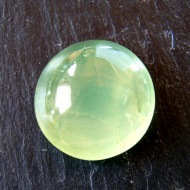 |
 |
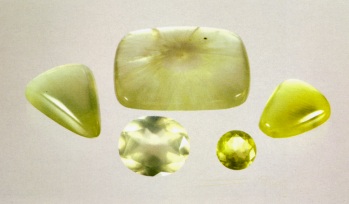 |
| 葡萄石(Prehnite) 4.64ct 12.5x6.7mm Barhead, Scotlant |
葡萄石(Prehnite) 針状の恐らくは緑簾石結晶インクルージョンを持つカボション (Cabochon with epidote crystal inclusion) 22.60ct 19mm Poona, India |
葡萄石(Prehnite) | ||
| 1.07ct 8.7x5.1mm | Cabochons 9.52-45.80ct, Facet 1.55 & 7.19ct | |||
| Kalkaringi (Wavehill), Northern Territories, Australia | ||||
| 化学組成 Composition |
結晶系 Crystal System |
結晶形 Crystal Form |
モース硬度 Hardness |
比重 Density |
屈折率 Refractive Index | |
| 葡萄石 Prehnite |
Ca2Al2Si3O10(OH)2 | 斜方晶系 Orthorhombic |
6 - 6½ | 2.80-95 | 1.617-670 | |
| 菱亜鉛鉱 Smithsonite |
ZnCO3 | 三斜晶系 Trigonal |
 |
4½ | 4.3-5 | 1.625-850 |
葡萄石(Prehnite)
名前について(About name)
プレーナイトの名は南アフリカの喜望峰地域がオランダの植民地であった時代の提督、ヘンドリク・フォン・プレーン
(Hendrik von Prehn : 1733-1785) に因んで名づけられました。
恐らくプレーンは当時のヨーロッパの上流階級間で大流行であった鉱物蒐集家の一人であったと思われます。
任地の南ケープタウンにて入手した新しい鉱物に興味を抱いたに違いありません。
彼の死後ではありますが1790年に鉱物名に初の個人に因む名が付けられると言う栄誉に浴しました。
葡萄石という和名はこのマスカットのような色合いと、葡萄の粒のような産状とを表した風情ある命名です。
The prehnite's name derives from Hendrik von Prehn (1733-1785), who was the governer of Cape of Good Hope region while Holland collonized South Africa. H. von Prehn certainly was one of a good mineral collector, which was in the fashion in Europe and reported to the society, he somehow obtained the new mineral, found near The Cape of Good Hope. In 1790, for the first time, new mineral was named after a private name.
産状と産地(Origin and occurence)
熱水型の成因で玄武岩晶洞やアルプス型の鉱脈中に方解石、曹長石、緑簾石や沸石を伴って発見されます。
普通は微細な四角板状結晶が放射状に集まって葡萄状の集合体となって発見されます。
世界各地で発見されますが、アメリカ・ニュージャージー州の West Paterson, イタリアのファッサ渓谷、インドのプーナ、アフリカのナミビア、カナダ・ケベック・アスベストスのジェフリー鉱山、シベリアのタルナク等が重要な産地です。
最初の発見地南アフリカ産の葡萄石はケープ・エメラルドと称して装飾用に売られています。
葡萄石が明らかな結晶形を示すような産状は珍しく、下の写真のようにカナダ・アスベストスのジェフリー鉱山産の結晶が世界的に知られています。
日本では翡翠の産地で有名な糸魚川小滝の曹長岩の空隙に写真のような結晶が発見されます。
Prehnite occurs as hydrothermal origin, in basalt cavities and in Alpine-type veins , often associated with calcite, albite, epidote and zeolites, also in low grade metamorphic rocks and after calcic plagioclase in altered igneous rocks. Rich aggregates are known from West Paterson, New Jersey, U.S.A ; Val di Fassa, Italy ; and Poona, India. Crystals up to 45mm across found in Copper Valley, Brandberg, Namibia, Asbestos, Quebec, Canada and Talnakh, Siberia, Russia.
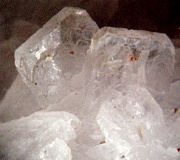 |
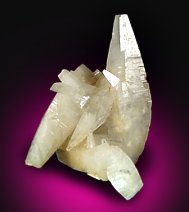 |
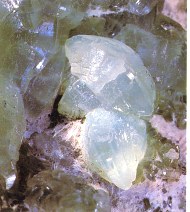 |
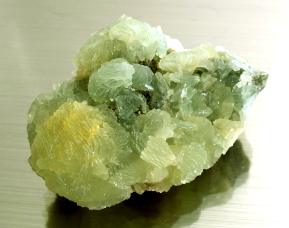 |
 |
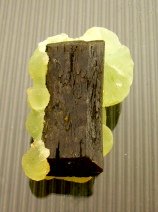 |
| 葡萄石 (Prehnite) 2mm 新潟県糸魚川市小滝 Kotaki, Itoigawa, Japan |
葡萄石(Prehnite) 22x16x11mm Asbestos, Jeffrey mine Quebec, Canada |
葡萄石(Prehnite) 6cm Le Bourg-d'Oisans France |
葡萄石(Prehnite) 60x42x25mm Jaen, Spain |
葡萄石(54x42mm)と共成した緑簾石(44x18mm) Prehnite(54x42mm) with Epidote crystal(44x18mm) Bendoukou. Nioro du Sahel, Mali | |
マリ共和国の葡萄石 (Prehnite from Mali, Africa)
アフリカ、マリ共和国の葡萄石の産地は1994年春に稀に見る美しいグロシュラーアンドラダイト・ガーネットの産地として一躍宝石関係者の脚光を浴びました。セネガル、モンロビアと国境を接する辺境の地です。
実際にこの地でガーネットが採れる事はさらに80年昔の1914年のことですが、大きく不透明な結晶の内部のほんの一部の透明な部分しか宝石質でなかったために忘れられていました。
共に採掘されるマリ・ガーネットとそっくりの色合いの葡萄石や緑簾石が市場に出回り始めたのはごく最近のこと、2003年頃です。
これほどの鉱物標本が何故長い間注目もされずに放置されていたと言う事情から、サハラ砂漠の西の果ての辺境の産地の状況を忍ばせます。
最新の情報によると Diakon の漂砂鉱床は固い岩盤に至るまで掘り尽くされ、全部で13トンのガーネットが採集された後に採掘は停止されました。
葡萄石は13kmほど離れた Bendoukou 村の周辺に2005年頃に新たに発見された鉱床でかなりの量が採掘され、宝飾品用に出荷され始めています。他の産地と比べるとマリ産の葡萄石は比較的透明度が高いのが特徴です。
葡萄石はしかし冒頭の写真のように宝飾品としてとりわけ魅力がある鉱物とは言えません。見事な緑簾石を伴う葡萄石の貴重な標本として眺めるのが最も相応しい対応でしょう。
In spring 1994, first gemmy sample of grossular andradite garnet piece was brought to Idar Oberstein, Germany, which caused the sensation to the gem world. It was in 1914 that garnet find was reported in the desert-savanna are of Western Sahara desert but was forgotten away because garnet was not considered valuable due to extremly low gemmy content. This rare gemmy grossular-andradite alluvial deposit progressed into bedrock, and the mines were soon exhausted. More than 13 tonnes of garnet were recovered before most operations ceased. Prehnite and associated minerals (vesuvianite, epidote and garnets) are now mined at several localities near the villages of Bendoukou and Diakon. The most active locality was Djouga located about 5km north of Bendoukou village.
オーストラリアの葡萄石 (Prehnite from Australia)
オーストラリアでは30年ほど昔から北部の砂漠地帯にて細々と葡萄石が採掘されていました。
正確な場所は港町ダーウィンの真南、900kmほどのタナミ砂漠の Wave Hill (現在の地名は Kalkaringi )の集落郊外にある鉱床でスコルス沸石、方解石、紫水晶、煙水晶、瑪瑙と共に葡萄石が採れます。
2001年時点の情報では最も近い Katherine の町から460kmの砂漠の中とありましたが、最新の情報では8km 離れたダグラグーの町と併せて人口700人ほどのコミュニティーで、ともかく人が暮らしている場所です。
2005年初めから新資本による新たな採掘が始まり、写真のような高品質の研磨品が "Sun Jade" の名前で市場に姿を見せ始めました。
400kgのラフから得られるカボションやファセット級は4kg、ビーズ級が6kgと、宝飾品用の歩留まりは3%程にすぎません。
Prehnite has been mined in Australia since 30 years in the Tanami Desert of Northern Territory. Exact location is near the township of Kalkaringi(former name Wave Hill), about 900km south by road from Darwin. Since early 2005, new ventures has been prospecting the deposit and started the marketing of polished prehnite under the trade name "Sun Jade" Prehnite is mined associated with scolecite, calcite, amethyst, smoky quartz, and agates. Gem quality prehnite is very rare: a 400 kg parcel of rough might be expected to yield just a 6 kg of translucent tumbled stones and 4 kg of semitransparent beads.
さて、今回全く関係のない葡萄石と菱亜鉛鉱とを一緒に取上げたのは、この二つの鉱物が呆れるほど似通っているからです。冒頭の比較表のように成因や組成等の特性が全く異なる鉱物が産状や外観がこれほど類似していることに驚くしかありません。葡萄状の産状も、またカボション・カットされたものや稀にファセットされた場合にも肉眼では区別が困難です。葡萄状の結晶の場合には付いている母岩の種類や共生する他の鉱物種によって見分けることが出来ることもあります。またカットされたものは比重や硬度が異なりますから調べれば容易に識別は可能です。
The reason two different minerals Prehnite and Smithsonite are picked up together is, simply, they often looks surprisingly similar and are difficult to identify each other, both in botryoidal appearance and in fashioned stones, despite their different occurences and chemical compositions, etc. However, relatively great differences in density and mohs hardness enables us to identify them.
菱亜鉛鉱(Smithsonite)
 |
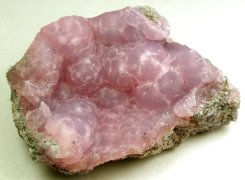 |
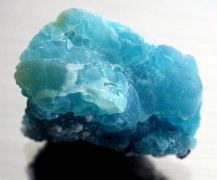 | ||
| 葡萄状の菱亜鉛鉱結晶 5cm Botryoidal smithsonite Kelly mine, New Mexico, U.S.A. |
葡萄状のピンクの菱亜鉛鉱結晶
38x25x18mm Botryoidal pink smithsonite |
水色の菱亜鉛鉱結晶(39x19x24mm) Pale blue smithsonite | ||
| Refugio Mine, Choix, Sinaloa, Mexico | ||||
 |
 |
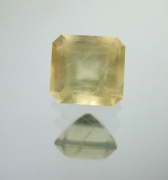 | ||||||||
| 菱亜鉛鉱結晶(Smithsonite)32mm Tsumeb, Namibia |
犬牙状菱亜鉛鉱結晶 1cm Scalenohedral crystal Tsumeb, Namibia |
菱亜鉛鉱カット石 2.45ct Faceted smithsonite 8x7.5mm Tsumeb, Namibia |
名前について(About name)
ヨーロッパでは18世紀末まで銅と混ぜて真鍮を作るための亜鉛鉱をカラミンと呼んでいましたが、実はカラミンには含水珪酸亜鉛鉱である異極鉱と炭酸亜鉛鉱である菱亜鉛鉱等とが混同されていました。
いずれも鉛や亜鉛の二次鉱床として葡萄状の産状を示すために区別が付かなかったのです。
この二種類の鉱物が実は別物であることを1807年に明らかにしたのがイギリスの鉱物学者スミッソン( James Smithson : 1765-1829) でした。スミソナイトの名は1835年に彼の名に因んで命名されました。
スミッソンが残した莫大な遺産は後にアメリカのスミソニアン協会の設立に貢献したことでも名前を残しました。和名は主成分の亜鉛と菱形の面を持つ結晶形に因むものです。
The simthsonite name derives from English mineralogist James Smithson (1765-1829), who identified two different minerals smithsonite from hemimorphite in 1807, both have long been confused as same mineral, called calamine, used to produce brass, mixed with cupper. Smithson's name was also left for The Smithsonian Institution, since his huge heritage contiributed in establishing the Institution.
産状と産地
菱亜鉛鉱は亜鉛鉱床の酸化帯に主に閃亜鉛鉱が風化し周囲の石灰岩と反応して出来る二次鉱物として生成します。
したがって同じ産状のトルコ石と同様に普通は腎臓状,葡萄状、鍾乳石状の団塊となります。
このような産状で結晶形を示すことは滅多にありませんが、稀に南アフリカ・ジンバブエのブロークン・ヒル鉱山やナミビアのツメブ鉱山からは菱面体や犬牙状の結晶が発見されます。
純粋な菱亜鉛鉱は灰色の半透明な鉱物です。しかし銅を不純物として含むときは青緑色に、鉄では赤、微量のコバルトでピンク、カドミウムで鮮やかな黄色と多彩な色合いで発見されます。
アメリカ・ニューメキシコ州のケリー鉱山産青緑色やイタリア・サルジニア島のモンテ・ポニ産の黄色の縞を成す鍾乳石状の塊は彫刻や宝飾用途に使われています。
メキシコ、シナロア州のレフヒオ亜鉛鉱山からは1970年台初頭から亜鉛の2次鉱床にピンク、黄色、橙、紫、緑、青と色とりどりの葡萄状の菱亜鉛鉱を産しました。
鉱床が枯渇してしまいましたが、かつて得られた標本が現在も市場に流通しています。
ギリシアのアテネ郊外のラウリウム鉱山産もかつては美しい青緑色を産しましたが資源が枯渇しました。
現在ではしかしアメリカのケリー鉱山産を材料にギリシア産として売られています。
Smithsonite is a product of superficial alterration of sphalerite, particularly in limestone which, through oxygenation, turns into soluble sulphates; these, reacting with the surrounding rocks, give zinc carbonate and, occacionally, fine crystals of gypsum. Smithsonite has the same crystalline system as calcite, and , like it, can produce rhombohedrons or scalenohedrons. More commonly, however, it forms stony faces or concretionary, stalactiform masses. In the pure state, smithsonite is white, and sparklingly translucid ; copper colors it blue green, and iron a reddish color; less often, it becomes pink under the influence of cobalt or yellow under that of cadmium. It has been an important zinc ore. While kidney -shaped formations are frequent, good-quality crystals are rare, having been found on ly in Southern Africa(Broken Hill, Zimbabwe and Tsumeb, Namibia). The largest yellow scalenohedra crystals up to 40mm in size come from Broken Hill, Australia. Pink crystals, up to 30mm long occured in Tsumeb, Namibia. World famous blue-green botryoidal crust up to 100mm thick found in the Kelly Mine, New Mexico, U.S.A., which is used for ornamental stone together with nice yellow aggregates and banded stalactites discovered in Monte Poni, Sardinia, Italy. Green variety from Laurium, near Athene, Greece was also used for ornament.
The Refugio Mine "Mina El Refugio" has been the sole source of fine botryoidal simithsonite from Mexico, since the early 1970s.
The bright, silken luster and attractive range of colors, deep pink, yellow, orange, pale green to bright green, purple and bleu made for handsome specimens. The mine is now exhausted of secondary zinc ores, and specimen collecting there has ceased.
| Top | Gem Hall |